Introduction to Muay Thai
In the vast universe of martial arts, one discipline stands out as a fierce, powerful, and deeply rooted practice: Muay Thai. Often referred to as the "Art of Eight Limbs," this martial art hails from the heart of Thailand and embodies physical prowess, rich traditions, a unique philosophy, and a distinctive set of rules. In this comprehensive exploration of Muay Thai, we will dive into its vibrant culture, its underlying philosophy, the rules governing its practice, the benefits it offers, and the key distinctions that set it apart from other martial arts.
The Culture and Philosophy
Muay Thai is not just a mere combat sport; it is a window into the soul of Thailand. Central to its philosophy is the notion of respect – respect for the art itself, respect for the trainers and fellow fighters, and respect for the traditions passed down through generations.
One of the most captivating aspects of this art is the pre-fight ritual known as the Wai Kru Ram Muay. This ceremony is rooted in centuries-old tradition and pays homage to teachers, parents, and ancestors. Accompanied by enchanting Thai music known as Sarama, fighters perform a series of movements, each filled with symbolic meaning. It's a mesmerizing display of grace, respect, and preparation that sets the tone for the battle ahead.
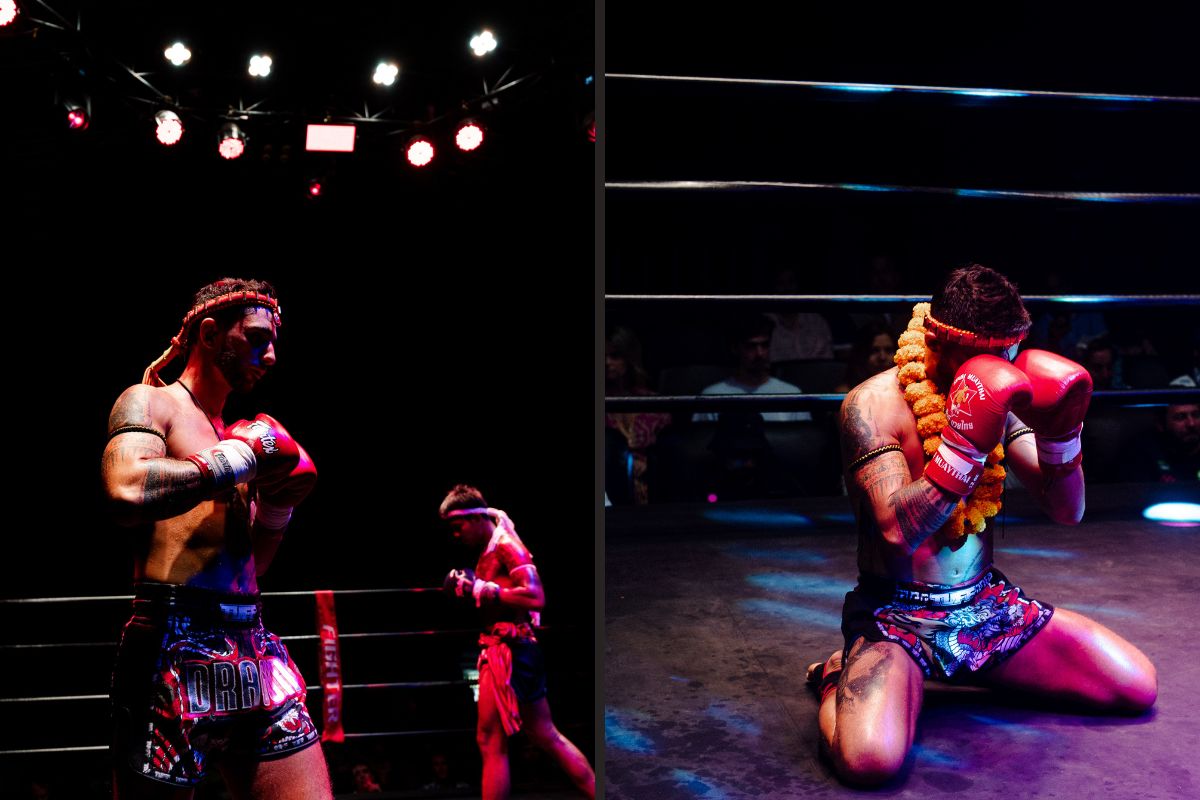 The Rules and Regulations of Thai Boxing
The Rules and Regulations of Thai Boxing
Competitions are governed by strict rules that ensure fairness and safety. Unlike traditional boxing, Muay Thai allows fighters to use an incredible array of techniques, including punches, kicks, elbows, knees, and clinching. It's a full-contact sport where each fighter aims to demonstrate their mastery of the "Art of Eight Limbs."
Fights are divided into rounds, usually lasting three minutes each, with a two-minute break between rounds. Judges score rounds based on the quality of strikes, effectiveness, and technique. Victory is not solely awarded to the most aggressive fighter; it's a nuanced evaluation of skill and precision. Stoppages can occur due to disqualifications, knockouts, or when one fighter clearly outmatches their opponent.
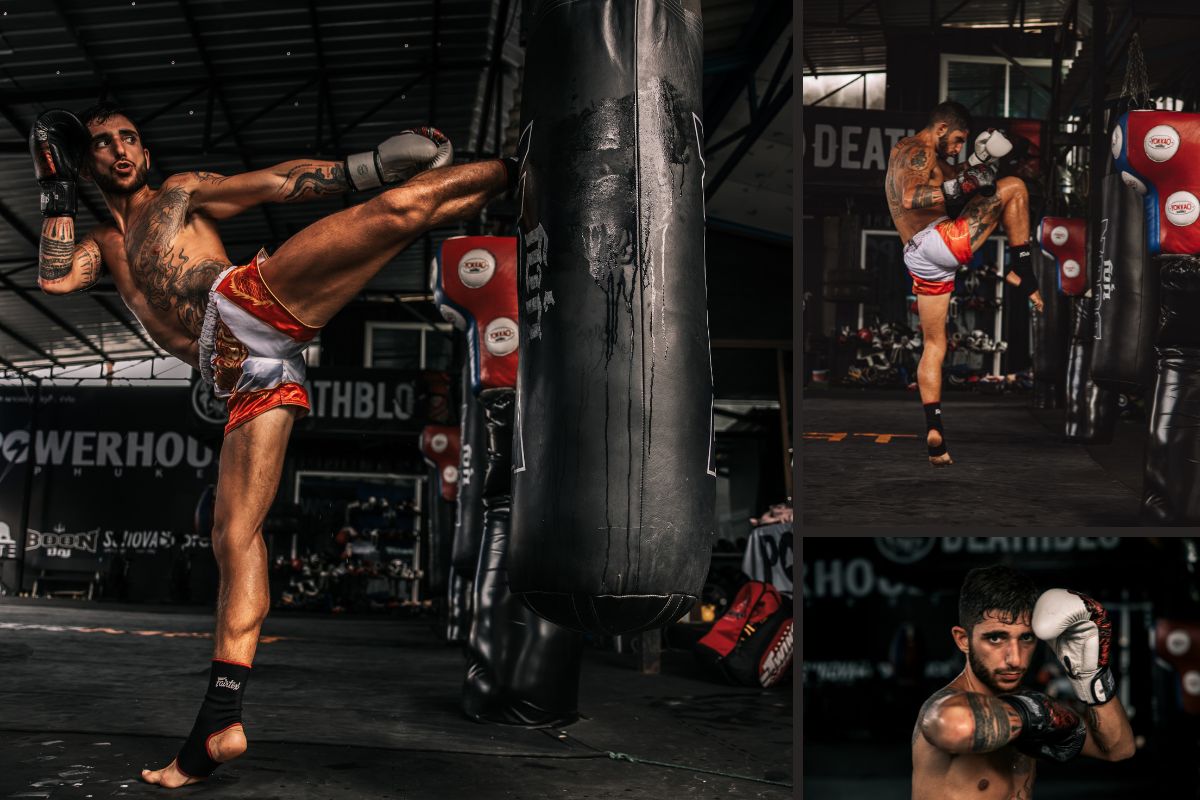 Benefits of Practicing Muay Thai
Benefits of Practicing Muay Thai
While this martial art might seem like a sport reserved for professional fighters, it offers a multitude of benefits for practitioners of all levels:
- Physical Fitness: Training is a rigorous workout that improves cardiovascular endurance, strength, and flexibility.
- Self-Defence: It equips individuals with practical self-defence skills that can be invaluable in real-life situations.
- Mental Discipline: Training in MT instils discipline, focus, and mental fortitude that can be applied to all aspects of life.
- Stress Relief: Engaging in Muay Thai provides an excellent outlet for stress, promoting mental well-being.
- Weight Management: Training burns many calories, making it an effective tool for weight control and fitness.
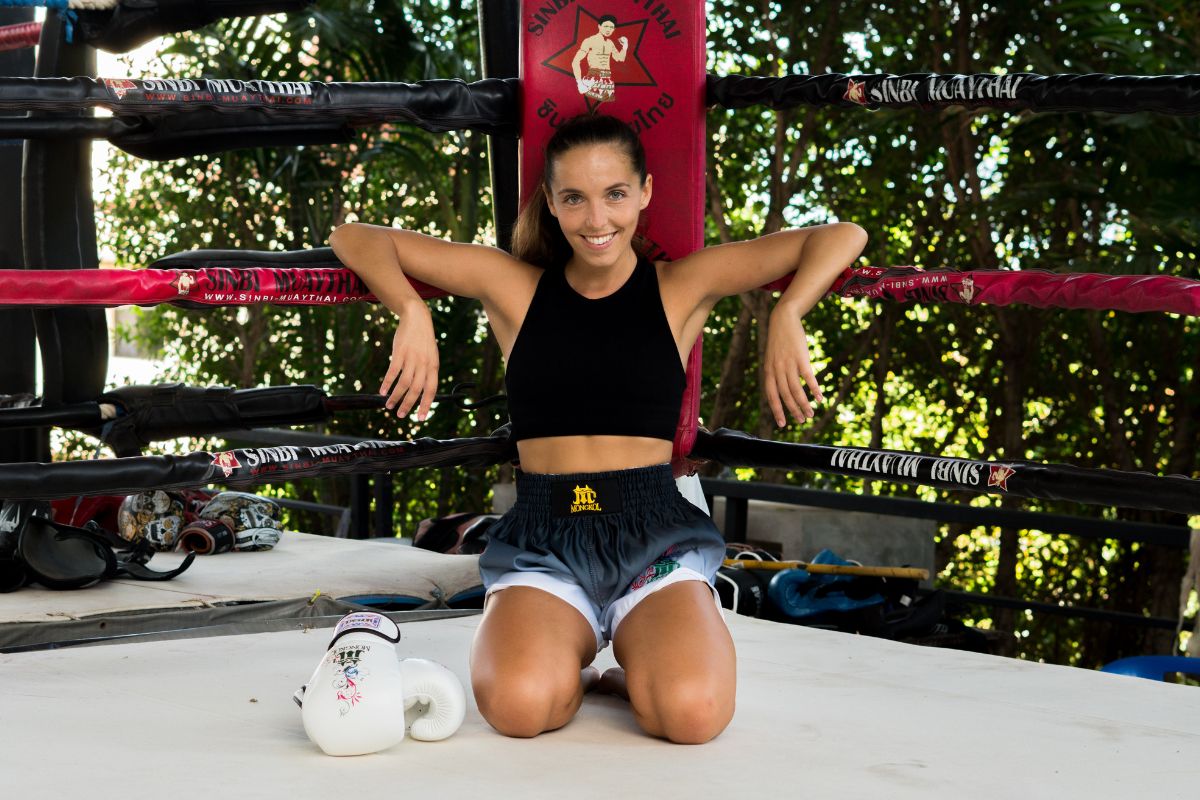 Muay Thai Stances: Orthodox vs Southpaw
Muay Thai Stances: Orthodox vs Southpaw
The renowned combat sport, encompasses two primary stances that form the foundation of its striking techniques: orthodox and southpaw. In the orthodox stance, a fighter positions their left foot forward, with the right foot behind, creating a strong base for power punches and kicks while protecting the liver with the right side of the body. This stance is the default for most fighters and allows them to execute traditional Muay Thai techniques efficiently. On the other hand, the southpaw stance is a mirror image, with the right foot leading and the left foot trailing. Southpaw fighters often use this stance to gain an advantage by presenting an unfamiliar target and different angles of attack to their orthodox opponents. The choice between these stances depends on a fighter's preference, strategy, and natural inclination, adding depth and versatility to the art of Muay Thai.
Art of Eight Limbs vs. Other Martial Arts
Muay Thai stands out from other martial arts due to its unique rules and style:
- Boxing: Muay Thai allows a broader range of striking techniques, including elbows, knees, and kicks, compared to traditional boxing.
- MMA: While Thai Boxing is a striking art, MMA involves ground fighting. MMA fighters often incorporate Muay Thai for striking skills but may also transition to ground combat.
- BJJ: MT focuses on stand-up striking, while Brazilian Jiu-Jitsu (BJJ) is based on ground grappling. The outcome of a hypothetical face-off depends on individual proficiency.
- Kickboxing: Kickboxing shares similarities with Muay Thai but lacks elbow strikes and has limited clinching. Thai Boxing places a stronger emphasis on kicks and clinching techniques.
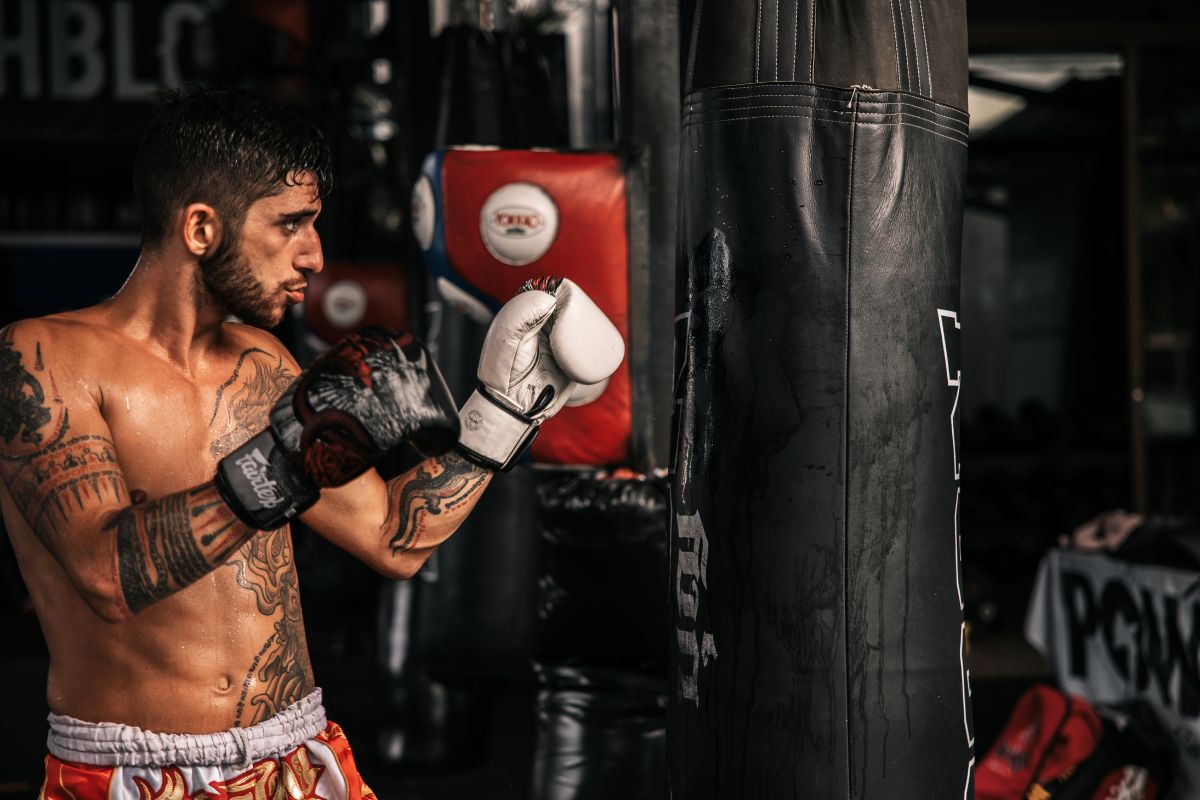 A Glimpse into the History of Thai Boxing
A Glimpse into the History of Thai Boxing
Muay Thai's roots trace back to the battlefields of ancient Thailand. Initially developed as a form of hand-to-hand combat for soldiers, it evolved into a sport over the centuries. The transition from military art to sport began around the 18th century when hemp ropes were used to wrap fighters' hands, a practice known as Kard Chuek, leading to higher knockout rates.
In contemporary Muay Thai, fighters no longer use hemp ropes but wear gloves built with differently from traditional boxing gloves. Gloves are more evenly padded to protect from elbows and kicks. Lace-up gloves between 6oz to 10oz are used for professional fighting, while gloves with velcro closures are used for day-to-day training and sparring.
Muay Thai in Modern Times
Nowadays, this art has transcended its Thai origins and is practised worldwide. Muay Thai events draw fighters and fans from all corners of the globe. It has also found a place in popular culture, with renowned fighters like Saenchai, Buakaw, Superbank, and Namsaknoi gaining international acclaim for their exceptional skills and dedication to the art.
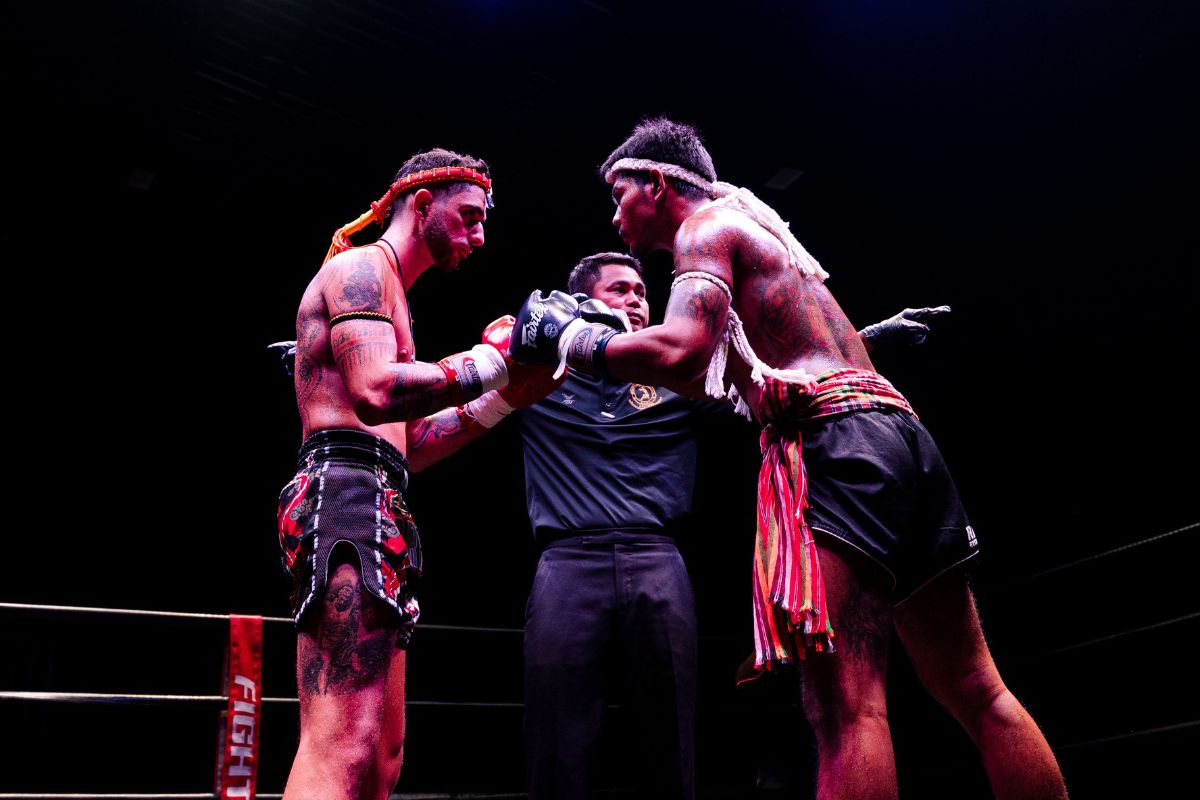 Dress Code: Muay Thai Shorts
Dress Code: Muay Thai Shorts
Like most sports, Thai Boxing has a dress code that reflects its traditions and culture. While professional events provide official fight gear and wear, Muay Thai training attire is more casual. Muay Thai shorts are worn, and men often go topless due to the heat that is usualy felt in Thailand. Outside of Thailand, shorts are typically paired with a tank top or t-shirt for both men and women.
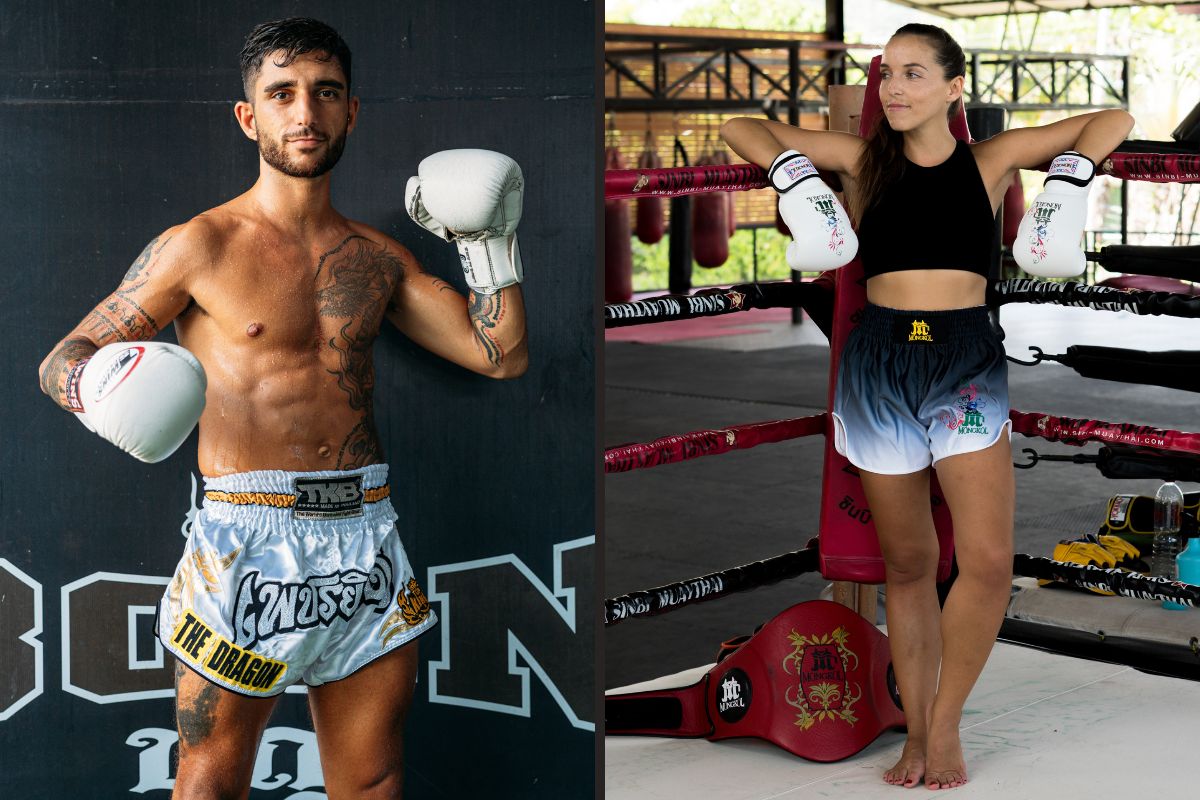 Accessories in Muay Thai
Accessories in Muay Thai
In addition to gloves and shorts, hand wraps and ankle guards are essential gear in Muay Thai. Hand wraps provide wrist and hand support, minimizing hand injuries during boxing. Reusable, washable hand wraps are used for training, while bandages are used in competition for wrapping hands. Ankle guards, while not always worn, provide warmth and additional support to the ankles, aiding balance and reducing the risk of ankle injuries.
Thai Boxing World
The "Art of Eight Limbs," is more than a martial art: it's a portal to Thailand's rich cultural tapestry. Rooted in respect, tradition, and unique philosophy, Muay Thai offers a complete approach to personal growth and combat prowess. Whether you aspire to become a professional fighter or seek to improve your fitness, mental discipline, and self-defense skills, Thai Boxing has something to offer to everyone. Step into the enchanting world of the "Art of Eight Limbs" and experience the beauty and power of Muay Thai for yourself.


